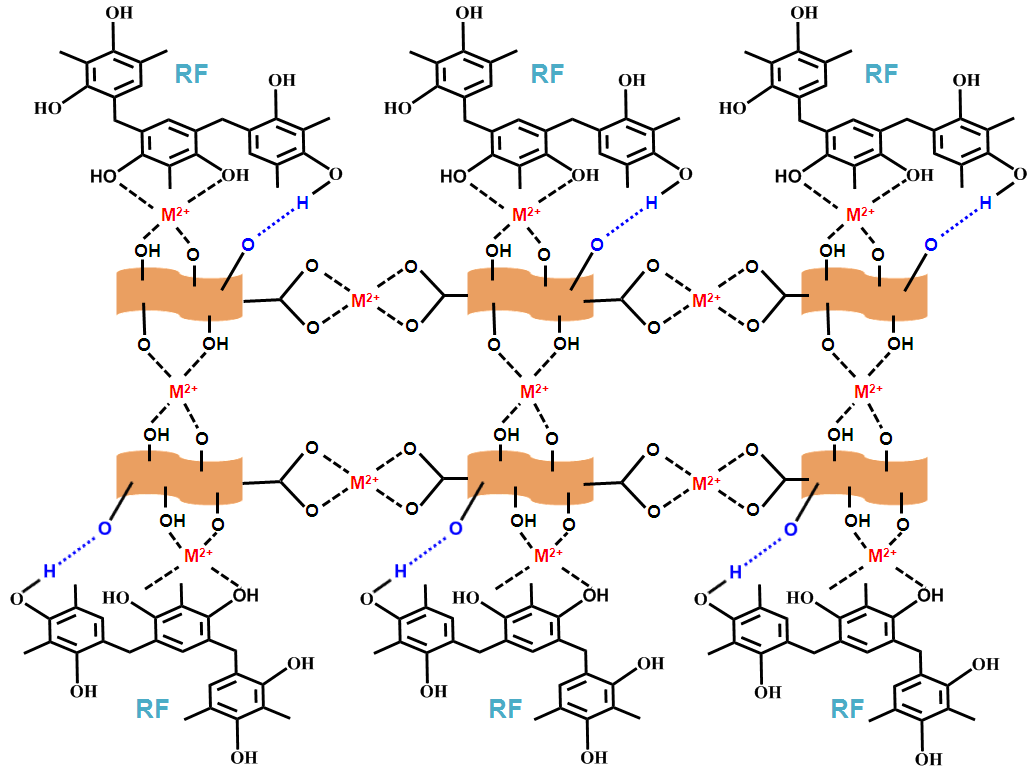Traditional resorcinol−formaldehyde (RF) aerogels, with low cost, low thermal conductivity and high porosity have various applications, such as thermal insulators and precursors to functional carbon aerogels. However, the practical application of traditional RF aerogels is hindered by the extremely high cost of a supercritical-drying technique used in the synthesis process and the poor mechanical property, usually brittle and fragile. To address this, Prof. YU Shuhong and his research group from the University of Science and Technology of China (USTC) have recently developed a low-temperature and scale-up strategy to synthesize a new kind of compressible RF-GO composite gels by using graphene oxide (GO) sheets as template skeletons and metal ions (Co2+, Ni2+, or Ca2+) as catalysts and linkers. The results have been published in Angew. Chem. Int. Ed. (Angew. Chem. Int. Ed. 2015, 54, 2397-2401) with the title of “Scalable Template Synthesis of Resorcinol-Formaldehyde/Graphene Oxide Composite Aerogels with Tunable Densities and Mechanical Properties”.

Figure 1. Scalable template synthesis of RF-GO composite aerogels
Compared to common brittle RF-based and silica-based aerogels, the aerogels can stand by a maximum strain as high as 80% and recover their original morphology quickly without any mechanical fracture after releasing the compression. After 100 loading/unloading cycles, the maximum degradation in compressive stress is less than 10% and the plastic deformation is only about 11.4%, which indicates the excellent structural robustness of this compressible RF-GO-metal aerogel. The versatility of this method allows them easily to scale up the synthesis just by enlarging the volume of autoclave.

Figure 2. Schematic structural model of the RF-GO composite aerogels.
The synergistic effects of GO, RF and metal ions result in the great compressibility of this composite aerogel. In the aerogel, there exist three types of interactions, i.e., (1) metal ions induced RF and GO network, (2) chemical cross-linked RF structure, and (3) hydrogen bonds between RF and GO (Fgiure 2). During the synthesis process, GO sheets are interconnected by metal ions through coordination. Simultaneously, metal ions also link GO sheets with chemical-linked RF by coordination between hydroxyl groups of RF and oxygen-containing groups on GO. In addition to the interactions induced by metal ions, hydrogen bonds also contribute to the strong linkage between RF and GO. With the reaction proceeds, RF is finally polymerized to a specific degree in the acid condition regulated by metal ions, which also contributes to the high compressibility of the aerogel. Due the excellent compressibility and high chemical reactivity, the RF-GO-metal aerogels can be applied as solid adsorbents for removal of dye pollutants. Moreover, as a precursor for carbon aerogel, the organic aerogel with tunable densities and mechanical properties having transitional metal (Co or Ni) inside may provide an effective material for cleanup of oil spillage and fuel-cell catalyst.
This research project is sponsored by the National Basic Research Program of China, the National Natural Science Foundation of China, the Chinese Academy of Sciences, and the Collaborative Innovation Center of Suzhou Nano Science and Technology.
Paper link: http://onlinelibrary.wiley.com/doi/10.1002/anie.201410668/abstract
(HFNL)